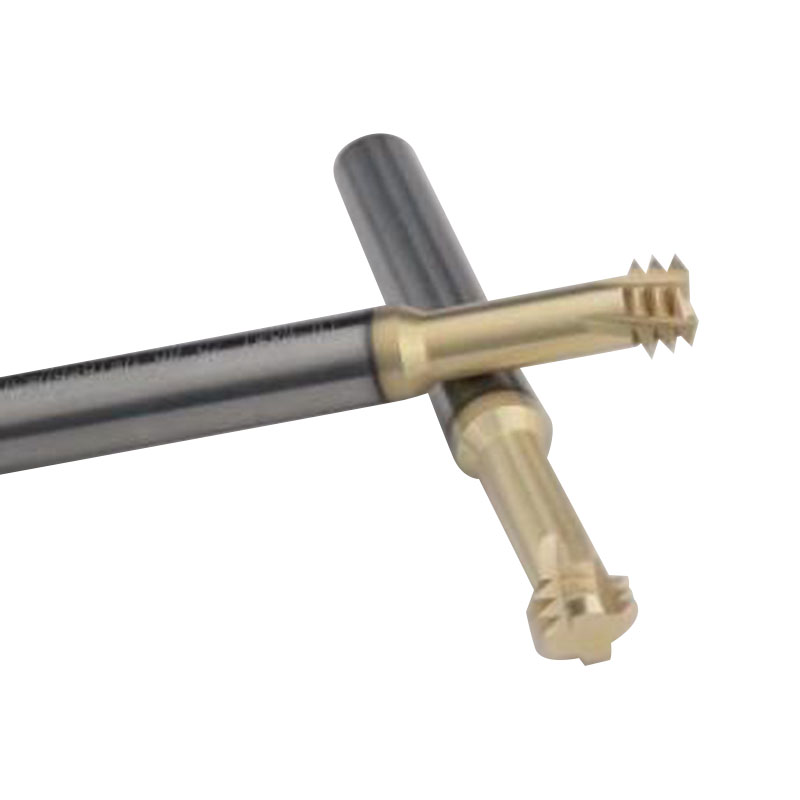Thread Milling: What It Is and How Does It Work
2024-06-20
Thread milling is a versatile and precise machining process used to create internal and external threads on a workpiece. Unlike traditional tapping, thread milling uses a milling cutter to cut threads, offering several advantages in terms of flexibility, accuracy, and the ability to work with hard materials. Here's a detailed explanation of what thread milling is and how it works:
What Is Thread Milling?
Thread milling is a machining process that involves the use of a CNC (Computer Numerical Control) milling machine and a specialized thread mill cutter to create threads. The cutter rotates at high speed and moves along the helical path of the desired thread, cutting the thread into the workpiece.

How Does Thread Milling Work?
1. Tool Selection
- Thread Mill Cutter: A specialized cutter designed with a specific thread pitch and profile. These cutters come in various types, such as single-point, multi-point, and solid carbide.
2. Machine Setup
- CNC Milling Machine: Thread milling requires a CNC machine with the capability to perform precise three-axis movements (X, Y, and Z).
- Workpiece Clamping: The workpiece is securely clamped on the machine table to prevent any movement during the threading process.
3. Programming
- CNC Programming: A CNC program is written to control the movements of the thread mill cutter. The program includes the cutter’s path, speeds, feeds, and depth of cut. The machine uses this program to follow the helical path required for threading.
4. Cutting Process
- Initial Positioning: The thread mill cutter is positioned at the starting point of the thread.
- Helical Interpolation: The CNC machine moves the cutter along a helical path. This simultaneous movement in the X, Y, and Z axes creates the thread profile.
- Internal Threads: For internal threading, the cutter moves inside the hole and follows the helical path outward to create the thread.
- External Threads: For external threading, the cutter moves along the outer diameter of the workpiece following the helical path inward.
- Multiple Passes: Depending on the material and thread depth, multiple passes might be required to achieve the final thread dimensions.
Advantages of Thread Milling
1. Versatility
- Different Thread Sizes: One thread mill cutter can be used to cut different thread sizes by adjusting the CNC program.
- Internal and External Threads: Capable of producing both internal and external threads.
2. Accuracy and Precision
- High Precision: CNC control allows for precise thread dimensions and excellent repeatability.
- Quality Threads: Produces high-quality threads with excellent surface finish.
3. Material Flexibility
- Hard Materials: Effective for threading hard materials that may be difficult to tap, such as hardened steel and titanium.
4. Reduced Tool Inventory
- Fewer Tools Required: A single thread mill can replace multiple taps, reducing the need for a large inventory of taps for different thread sizes.
5. Chip Control
- Better Chip Evacuation: Milling produces smaller, manageable chips, reducing the risk of chip clogging and breakage.
6. Adjustable Thread Depth
- Depth Control: Easy to adjust the thread depth by modifying the CNC program without changing tools.
Disadvantages of Thread Milling
1. Initial Cost
- CNC Machines: Requires CNC milling machines, which can be expensive.
- Specialized Cutters: Thread mills can be more expensive than traditional taps.
2. Complex Programming
- Programming Skill: Requires skilled CNC programming to achieve the desired thread profile.
Applications of Thread Milling
- Aerospace: High-precision threading of hard materials and complex components.
- Automotive: Threading of engine parts and other critical components.
- Medical Devices: Creating precise threads in medical implants and instruments.
- General Manufacturing: Versatile threading for various industrial applications.
Conclusion
Thread milling is a highly versatile and precise method for creating threads on a workpiece. Its ability to produce high-quality threads in a variety of materials, combined with the flexibility offered by CNC programming, makes it a preferred method in many high-precision and demanding applications. Despite the higher initial costs and complexity, the advantages of thread milling often outweigh these drawbacks, especially in advanced manufacturing environments.

